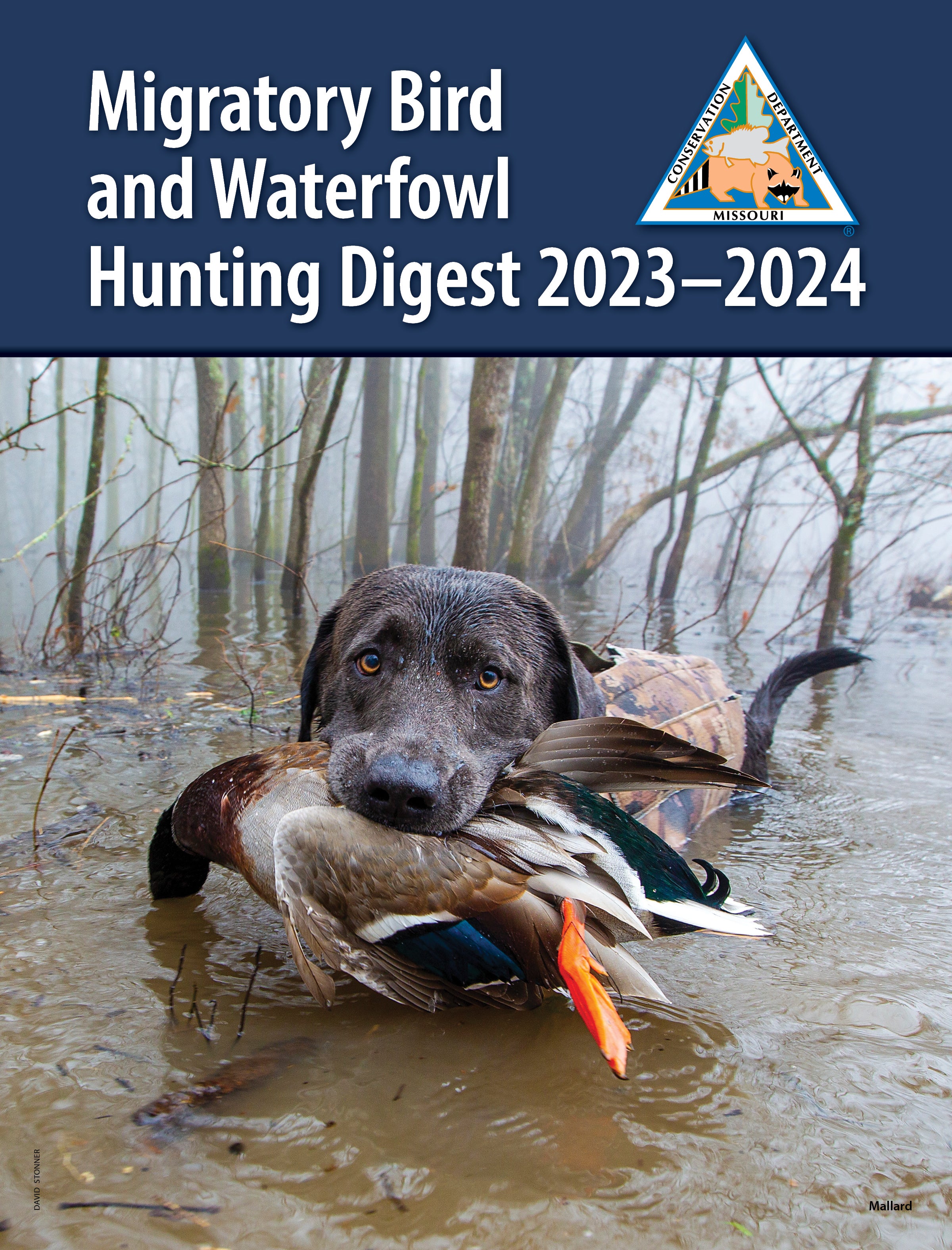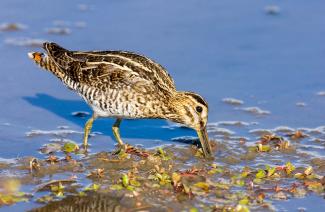
About Rails and Snipe
Rails
Several rail species migrate through Missouri every year, including yellow, Virginia, sora, black, and king rails. Virginia and sora rails are the only two species that may be harvested, and sora is the most abundant of these.
Rails are predominantly marsh birds and can be seen and heard on many wetland conservation areas lurking in thick vegetation. Rails are omnivores and eat a wide variety of plants, insects, snails, and crayfish with their long bill made for probing in moist soils.
Snipe

The common snipe (also called Wilson's snipe) is aptly named, because it is common in Missouri’s wetlands and soggy areas. This marsh bird uses its long bill to probe for insects, worms, and larvae that burrow in damp soil. A flock of snipe is called a "wisp."
Rail and Snipe Behavior
Rails and snipe are a challenge to hunt. When flushed, these birds only fly a short distance and dive back into vegetative cover. Once back on the ground, the birds run quickly and are very hard to flush a second time. During peak migration, sora rails are abundant and will react to loud sounds such as a car door slamming or single, loud hand claps.
Sora rails have several calls including a descending "whinny," a "ker-wee" sound, and a call that sounds like "weep." Snipe calls are a repeated "chip." The call of the Virginia rail sounds like pig-like grunts, "kid-dik."
Getting Started
Rail and snipe hunting opportunities are very limited by weather, especially precipitation. Contact the area manager at the areas you are interested in hunting before making a trip.
Hunting Gear
- Shotgun, preferably a 20 gauge
- Shot: #7½ or #8 lead shot, or #7 if using steel
- Pair of hip waders
**A Small Game Hunting permit and a Migratory Bird Hunting permit is required. If hunting on MDC public lands, be sure to consult the Migratory Bird and Waterfowl Hunting Digest for a list of conservation areas requiring non-toxic shot.
Tips and Tricks
Hunting snipe is challenging, as they rarely fly straight and are quick to find cover. Hunting rails is a little easier as they tend to fly low and slow and in a much less erratic pattern. Either way, you need a good eye. It is rare to spot them while they are on the ground.
When the birds flush, focus on the bird and not on your gun. Trying to aim the barrel when wing shooting will all but guarantee a miss. Looking at your barrel to aim or gauge your lead will cause you to stop your swing and shoot behind or under the bird nearly every time.























